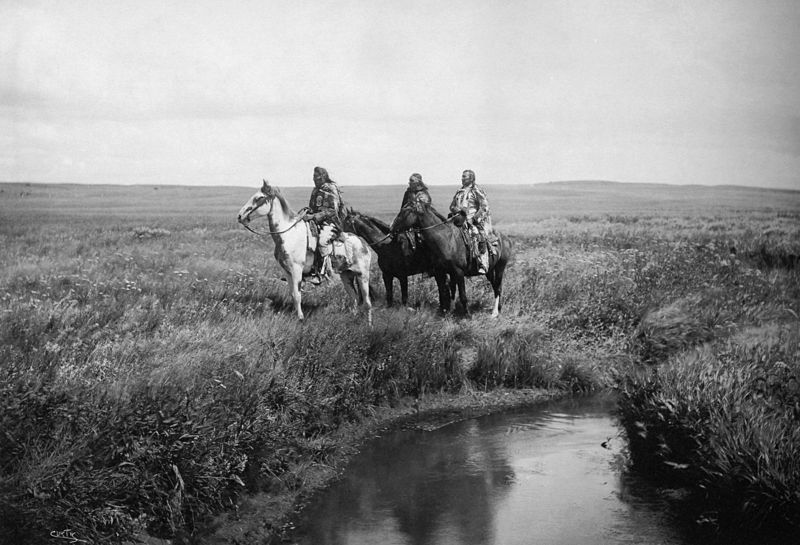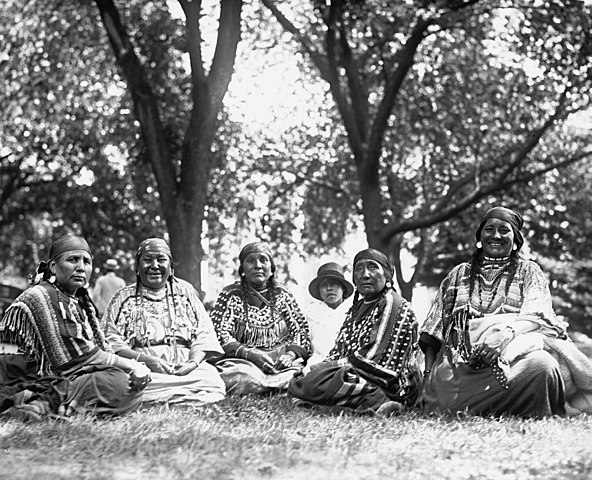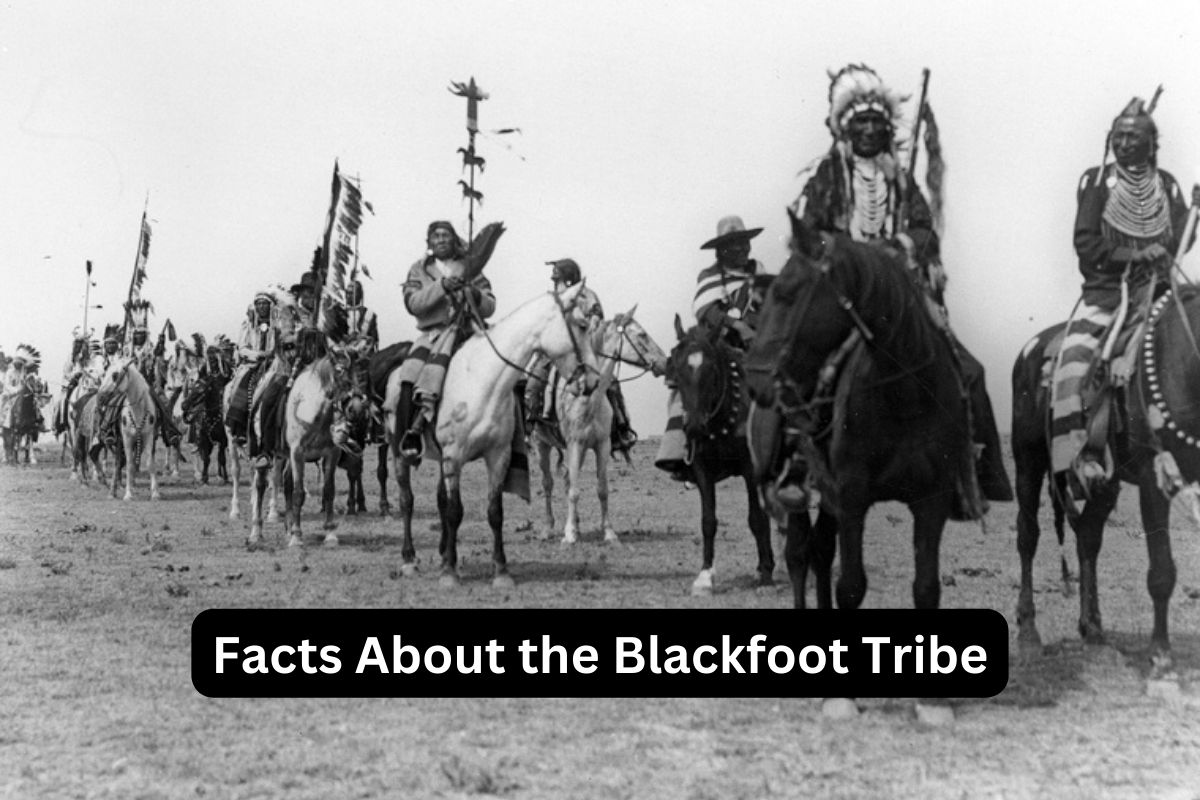The Blackfoot Tribe, also known as the Niitsitapi or Siksikaitsitapi, is an indigenous group with a rich history and cultural heritage.
Originally inhabiting the Great Plains region of North America, including parts of present-day Montana, Alberta, and Saskatchewan, the Blackfoot Tribe developed a unique way of life deeply connected to the buffalo.
They were skilled buffalo hunters, utilizing every part of the animal for sustenance, clothing, and spiritual significance. The tribe had a complex social and political structure, with autonomous bands led by chiefs and councils.
They lived a nomadic lifestyle, following the buffalo herds and residing in portable tipis. The Blackfoot Tribe maintained a strong spiritual and cultural identity through ceremonies, storytelling, and a deep reverence for nature.
Despite the challenges brought by colonization, the tribe continues to preserve their heritage, reclaim ancestral lands, and advocate for environmental conservation.
Blackfoot Tribe Facts
1. The Blackfoot Tribe is a group of indigenous peoples in North America
The Blackfoot Tribe, also known as the Niitsitapi or Siksikaitsitapi, is an indigenous group that has inhabited the Great Plains region of North America for centuries.
Also Read: Facts About the Crow Tribe
They primarily resided in areas that are now part of Montana in the United States, and Alberta and Saskatchewan in Canada. The name “Blackfoot” was given to them by European explorers due to the dark-colored moccasins they wore.

2. The Blackfoot Tribe consists of four main divisions
The Blackfoot Tribe is composed of four main divisions, which are sometimes referred to as the “Four Nations” or “Four Bands.”
These divisions are:
- The Siksika (Blackfoot)
- The Kainai (Blood)
- The Piikani (Peigan)
- The Northern Blackfoot (Siksikaitsitapi).
Each division has its own dialect of the Blackfoot language, although there are similarities between them. Despite their distinct dialects, the divisions share cultural practices and have intermarried throughout history.
3. The Blackfoot Tribe is known for their strong connection to the buffalo
The Blackfoot Tribe had a deep and profound relationship with the buffalo. They relied on the buffalo for sustenance, clothing, shelter, and spiritual beliefs. The buffalo provided them with meat, hides for clothing and tipis, bones for tools and weapons, and sinew for sewing.
Also Read: Mohawk Tribe Facts
The tribe’s economy and way of life revolved around the buffalo, and their success as buffalo hunters contributed to their social status and well-being. The Blackfoot people developed intricate hunting techniques and possessed immense knowledge of the buffalo’s behavior and migration patterns. They used every part of the buffalo, ensuring that nothing went to waste.
The buffalo was also a central figure in Blackfoot spiritual beliefs, representing strength, abundance, and harmony with nature. The Blackfoot honored the buffalo through ceremonies and rituals that expressed gratitude and respect for this sacred animal.
4. The Blackfoot Tribe had a complex social and political structure
The Blackfoot Tribe had a complex social and political structure. They were organized into bands, which were autonomous units led by a chief and a council of respected elders.
Chiefs were chosen based on their leadership qualities, wisdom, and ability to make decisions in the best interest of the community. The council members provided advice and acted as representatives of their band.
Decision-making was typically based on consensus, where all members had the opportunity to voice their opinions and concerns.
Both men and women played significant roles in the decision-making process, with women often exerting influence through their involvement in trade and agriculture.

5. The Blackfoot Tribe practiced a nomadic lifestyle, following the movements of the buffalo herds
The Blackfoot Tribe followed a nomadic lifestyle, adapting their movements and settlements to the patterns of the buffalo herds. They lived in portable dwellings known as tipis, which were well-suited to their mobile way of life.
The tipis were constructed using a framework of wooden poles covered with buffalo hides. They were lightweight, easy to assemble and disassemble, and provided efficient protection against the elements.
This mobility allowed the Blackfoot to follow the buffalo herds, ensuring a sustainable source of food, clothing, and other essential resources. The tipis were designed to accommodate the needs of a family and could be easily transported using horses.
6. The Blackfoot Tribe had a rich spiritual and cultural heritage
The Blackfoot Tribe had a rich spiritual and cultural heritage deeply rooted in their connection to the natural world. They believed in a complex system of spirituality that encompassed a wide range of supernatural beings and forces.
The Blackfoot practiced various ceremonies and rituals to maintain balance and harmony in the world. One of the most important ceremonies was the Sun Dance, a communal gathering that involved fasting, prayer, and physical endurance.
The Sun Dance was seen as a way to renew spiritual energy, strengthen community bonds, and express gratitude to the Creator. The Vision Quest was another significant rite of passage where individuals sought spiritual guidance and a deeper understanding of their purpose in life.
The Blackfoot also held the Medicine Pipe ceremony, which involved the use of a sacred pipe for prayer, healing, and making offerings. These ceremonies were accompanied by songs, dances, and intricate regalia, showcasing the tribe’s artistic expressions and cultural identity.
7. The Blackfoot Tribe had a strong oral tradition and storytelling played a significant role in their culture
The Blackfoot Tribe has a strong oral tradition that plays a crucial role in preserving their history and cultural teachings. Through storytelling, knowledge is passed down from generation to generation.
Elders are the keepers of this wisdom and are responsible for sharing stories that convey the tribe’s history, legends, moral lessons, and spiritual beliefs. These stories serve as a means of education and guidance, ensuring the continuity of Blackfoot traditions and values.
8. The Blackfoot Tribe experienced significant changes with the arrival of European settlers
The arrival of European settlers and the expansion of the United States and Canadian governments significantly impacted the Blackfoot Tribe. They faced displacement from their ancestral lands, loss of territory, and disruption of their traditional way of life.
The introduction of European diseases, such as smallpox, also had devastating consequences for the tribe, leading to a decline in their population. The Blackfoot had to adapt to the changing circumstances and navigate the challenges posed by colonization while striving to preserve their cultural heritage.
9. Today, the Blackfoot Tribe continues to preserve their cultural heritage and traditions
Despite the challenges they have faced, the Blackfoot Tribe continues to actively preserve and promote their cultural heritage. They have established tribal governments and organizations that work towards the revitalization of Blackfoot language, arts, and traditional practices.
Efforts are made to pass on knowledge and traditions to younger generations through language revitalization programs, cultural events, and educational initiatives.
Powwows, which are vibrant gatherings featuring traditional dances, music, crafts, and food, provide a space for celebrating and sharing Blackfoot culture with both tribal members and the wider community.
10. The Blackfoot Tribe has made efforts to reclaim and protect their ancestral lands
The Blackfoot Tribe is actively engaged in reclaiming and protecting their ancestral lands. They advocate for land rights and have been involved in negotiations and legal battles to regain control and management of their traditional territories. Environmental conservation is also a priority for the tribe.
They strive to protect natural resources, such as water, forests, and wildlife, and work to preserve sacred sites that hold cultural and spiritual significance. By asserting their sovereignty and stewardship over their lands, the Blackfoot Tribe aims to ensure the preservation of their cultural heritage and the sustainability of their way of life for future generations.
